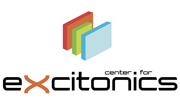
SEMINAR SERIES
Laurens D.A. Siebbeles
Department of Chemical Engineering, Delft University of Technology
Abstract:
The seminar will report studies on excitons and charge carriers in conjugated polymers, covalent organic frameworks and semiconductor nanocrystals. These materials have fascinating optical and electronic properties that are of interest for applications in e.g. solar cells, photodiodes, light-emitting diodes, field-effect transistors and nanoscale molecular electronics.
We studied the mechanism of charge carrier photogeneration in blend films of conjugated polymers and electron accepting materials by ultrafast optical and terahertz spectroscopy. It will be discussed how material structure affects the spatial extent and motion of excitons and free charge carriers.1,2
The generation of two or more excited states for the absorption of a single energetic photon is of interest for development of highly efficient (up to 44%) solar cells. Using time-resolved spectroscopy we found that carrier multiplication is highly efficiency in films of PbSe quantum dots that are strongly coupled by small linker molecules. The multiple charges produced by carrier multiplication efficiently escape from recombination in case strong coupling between quantum dots makes them highly mobile.3–5 For two-dimensional PbS nanosheets we found a carrier multiplication efficiency much higher than for quantum dots. For 4 nm thick nanosheets nearly all excess energy above the threshold is converted into additional electron-hole pairs.6 First results on carrier multiplication in two-dimensional superlattices of covalently bonded PbSe quantum dots will be discussed.7
Covalent Organic Frameworks (COFs) are materials with great promise for application in optoelectronics. We carried out microwave conductivity measurements on charges moving in COFs consisting of phthalocyanine units that are strongly coupled by pi-pi stacking. On basis of the experimental results and quantum mechanical calculations, it is inferred that charges move via a band-like mechanism with a mobility that can be as high as ~100 cm2/Vs.8
1) J. Piris, T.E. Dykstra, A.A. Bakulin, P.H.M. van Loosdrecht, W. Knulst, M.T. Trinh, J.M. Schins and L.D.A. Siebbeles, J. Phys. Chem. C, 113, 14500 (2009). 2) S. ten Cate, J.M. Schins and L.D.A. Siebbeles, ACS Nano, 6, 8983 (2012). 3) M. Aerts, C.S. Suchand Sandeep, Y. Gao, T.J. Savenije, J.M. Schins, A.J. Houtepen, S. Kinge and L.D.A. Siebbeles, Nano Lett., 11, 4485 (2011). 4) E. Talgorn, Y. Gao, M. Aerts, L.T. Kunneman, J.M. Schins, T.J. Savenije, M.A. van Huis, H.S.J. van der Zant, A.J. Houtepen and L.D.A. Siebbeles, Nature Nanotech., 6, 733 (2011). 5) C.S. Suchand Sandeep, S. Ten Cate, J.M. Schins, T.J. Savenije, Y. Liu, M. Law, S. Kinge, A.J. Houtepen and L.D.A. Siebbeles, Nat. Commun., 4, DOI: 10.1038/ncomms3360 (2013). 6) M. Aerts, T. Bielewicz, C. Klinke, F.C. Grozema, A.J. Houtepen, J.M. Schins and L.D.A. Siebbeles, Nat. Commun., 5, DOI: 10.1038/ncomms4789 (2014). 7) M.P. Boneschanscher, W.H. Evers, J.J. Geuchies, T. Altantzis, B. Goris, F.T. Rabouw, S.A.P. van Rossum, H.S.J. van der Zant, L.D.A. Siebbeles, G. Van Tendeloo, I. Swart, J. Hilhorst, A.V. Petukhov, S. Bals and D. Vanmaekelbergh, Science, 344, 1377 (2014). 8) S. Patwardhan, A.A. Kocherzhenko, F.C. Grozema and L.D.A. Siebbeles, J. Phys. Chem. C, 115, 11768 (2011).
Bio:
Laurens Siebbeles (1963) studied chemistry at the Free University in Amsterdam and obtained his PhD degree at the FOM-institute for Atomic and Molecular Physics (AMOLF) in Amsterdam in 1991. He was a post-doc at the University of Paris Sud in France. Currently, he is leader of the Opto-Electronic Materials Section and deputy head of the Dept. of Chemical Engineering at the Delft University of Technology in The Netherlands. His research involves studies of the nature and dynamics of excitons and charge carriers in nanostructured materials with potential applications in e.g. solar cells, light-emitting diodes and nanoelectronics. Materials of interest include organic nanostructured materials, semiconductor quantum dots, nanorods and two-dimensional materials. Excitons and charges are investigated by using ultrafast time-resolved laser techniques and high-energy electron pulses in combination with quantum theoretical modeling. The research is carried out in collaboration with several academic and industrial partners that are involved in synthesis, material characterization or device development.
More information about the MIT-Harvard Center for Excitonics »
